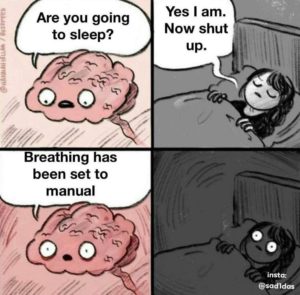If you’re reading this, you might be here to alleviate a sense of unease, to feel better in your body and mind. You might very well sense the value of mindfulness practices.
With apologies to Robert Frost, this post doesn’t concern which road you should take. It’s about the reality that we walk, and we walk, and we continue to walk the road we’ve been walking. Your brain is wired to take the path of least resistance—the familiar path—to increase your chances of survival.
But today’s humans live on for decades longer than it takes to reproduce, to replace ourselves. We can spend that time in much greater contentment than feeling and functioning just well enough to stay alive.
You probably want something better than mere survival—I sure do. Some practices move our brains beyond surviving and toward thriving, contentment. The practices we offer are available to everyone who is still breathing, thinking, and willing to participate.
We’ve known how to do this forever.
Over twenty-five hundred years ago, ancient yogis began offering practices to ease the suffering inherent to the human condition. If you ever doubted that humans are more alike than we are different, even across space and time, consider the kleśas, the Sanskrit word for for afflictions.
Have you experienced one or more of the following?
- Ignorance
- A locked-in or inflated sense of self (“I, me, mine”)
- Attachment; clinging
- Aversion; resistance
- Fear of death
As you digest the words in that list, notice what happens in your body, your feelings, and especially your breath. These are the kleśas, the impediments to a clear mind and heart.
Today’s science bears this out.
Key parts of your brain are wired for survival. The first time you burn yourself on the stove, you learn to avoid touching hot surfaces for good. You create a habit that saves your skin.
The parts of your brain where reasoning occurs might tell you the stove is off and perfectly safe to touch. But under stress, if any part of your organism thinks the stove is hot, a warning from the survival part of the brain leaps forward to protect you—faster than the speed of thought.
The Road More Traveled
Your immediate reaction, that thing that happens in you before you have time to think, is a samskara—a pattern. When we walk the same route daily, a path forms. We tamp down the grass, clear the brush, and create a rut. This quickly becomes the easiest way to travel. If you leave the well-formed path, you might have to navigate uneven ground or bushwhack.
Have you brushed your teeth without reminding yourself how? Have you driven several miles and realized you hadn’t noticed how far you’d gone? That’s because you don’t have to relearn toothbrushing or driving every time you do it. Thank goodness!
Your nervous system has formed countless well-worn paths to keep you alive—habits you didn’t create consciously. Your heart beats without your telling it to. Fortunately, even if you tell it to stop, it won’t. Thank goodness!

Used with permission.
Breathing is the same—a really good habit to have.
But what about habits that don’t serve you? Including—especially—breathing habits?
Every Breath You Take
You breathe 15,000 to 20,000 times daily. Imagine having to remind yourself how to breathe, breath after breath, forever. Talk about unsustainable.
The way you breathe is habitual—it has to be to keep your organism alive and in the steady state that reduces strain and promotes health.
Habits are always formed from the best choices you managed to make in a moment when you needed to protect yourself. The result was rewarding enough that the brain remembered; the next time you needed protection, the brain said, “Do that thing the same way again. And again.”
But a choice that once protected you might not help you thrive into the future. Someone with childhood respiratory allergies might habitually breathe through the mouth into the chest. When that kind of breathing was the only thing available, it was by far the best option. The brain took that path. And the pattern stuck.
Say the same person outgrows those allergies or finds effective treatment. After years of mouth breathing shallowly into the chest, the nasal congestion might be gone, but the breathing samskara—the habit pattern—stuck. Mouth breathing causes inflammation that makes it harder to breathe nasally and below the chest into the diaphragm (mouth breathing begets mouth breathing). Mouth breathing is associated with anxiety and health issues, whereas nasal breathing has health benefits.
Breathing through the nose and into the diaphragm is healthier and more calming over the long term. But with no immediate survival need, the brain lacks a spark for immediate change that lasts. For the kind of change we choose in more normal and unprotected moments, we tap the more modern parts of our brain.
We have the ability to discover and change even deeply ingrained habits like breathing. It takes time. Perhaps a long time. And patience.
But not doing the work, not taking the time and making the effort, means change will happen never. You deserve better.
Heating Things Up
Tapas (the Sanskrit term, not small plates of tasty food) provides heat that fuels the process of change. As my teacher Robin Rothenberg wrote, it takes “fortitude and discipline to actively pursue the transforming of habits that cause us to suffer.”
Fortitude and discipline—not willpower, which current studies are revealing might be a myth. Instead, we use the modern parts of our brains to create the conditions that will yield the results we want in the more primitive part of our brains.
How? Gaze into the soothing image below, and and read our post “How to Change from the Inside Out.”

Photo by Ugne Vasyliute on Unsplash
